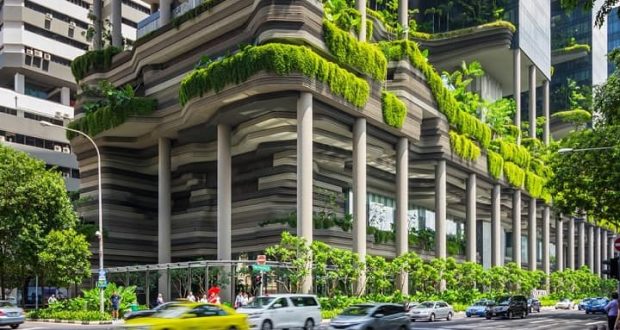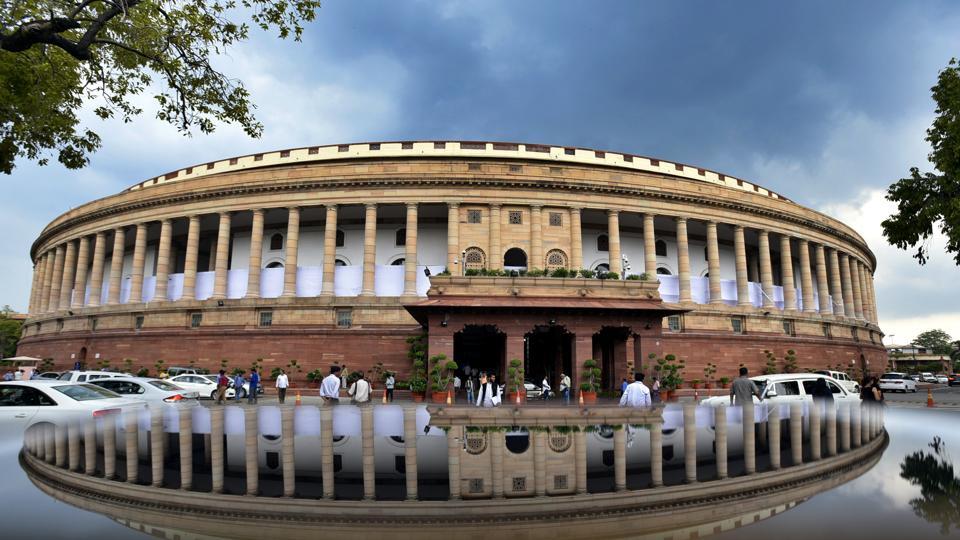Green structures reduce carbon emission, energy consumption and waste production. In addition, these structures also improve the air and water quality in the periphery area creating healthier ambience for community and society.
The adverse impact of reckless carbon emission through various means leads to climate change causing rise in temperature, reduction of forest resources, erratic rainfall and depletion of ground water level. These problems have spiraling effect on people and planet as a whole. It has become a global concern for handling such issues and to bring down their adverse effects. Recent joint statement issued by world Health Organisation and LANCET highlights their concern towards combating carbon emission which is the root cause of climate change. The 2023 UN Climate Change Conference (COP28) highlighted the role of building and construction sector in creating a sustainable and resilient future with specific agenda focusing on green and resilient buildings. The green building concept is one of the steps which aims to preserve the ecosystem and the environment and to benefit people and society. The aim of green building measures helps in achieving net zero carbon emission along with cost effectiveness.
Building and construction sector is one of the major contributors (30%) to emissions globally. Green building, is a type of sustainable construction with eco-friendly architecture following green principles in its design, construction and maintenance. Hence, care is to be taken to minimise the impact of environment as well as to ensure resource efficiency. Government buildings, real estates, individual properties and commercial buildings are encouraged to adopt green principles to have sustainable buildings with resource saving and sustainability.
There are various types of benefits of green buildings which are said to be environmental, economic and social benefits. These green structures reduce carbon emission, energy consumption and waste production. In addition, these structures also improve the air and water quality in the periphery area creating healthier ambience for community and society. These also contribute to create a sense of environmental responsibility and community awareness towards safety of environment. Despite of their initial higher cost on construction, these buildings have long term economic benefits due to lower energy consumption, lower maintenance cost, aesthetic benefits and increased property value.
Green building integrates energy efficient technologies in design and construction. While designing a green building, focus is given on various aspects like east-facing, broader door size, high windows, rectangular shape, bright illumination from sunlight, ultra-violet filtering windows, tinted glasses and window-sealing. Adequate care is taken for better ventilation through green measures like higher ceiling height, self-movement of ventilators etc. Green building promotes use of bio-degradable materials, recycled materials and use of stones, sand stone, chips and products made out of fly-ash with low embedded energy. For ensuring control of acoustic and temperature of green building certain precautions are taken such as multiple roofing, green roof, opening at east and southern side, sand stone cladding outside walls, use of cool roofing materials (lime coating), climbing creepers in windows, vertical gardening in roof top and landscaping in surroundings. Energy efficiency can be achieved by ensuring energy-saving building design, IT based monitoring of electrical system, installation of solar-to-electric project, regular maintenance of electrical system and adopting other energy saving measures.
Similarly, it is important to manage water and waste water efficiently and productively. It can be ensured by effective plumbing system with no leakage, use of automatic toilet faucets, installing sprinkler or drip irrigation system for landscaping, rain water harvesting system and adopting various technologies like water-free urinal, air-based flushing system and regular maintenance of equipment and installations. Waste management Is another important aspect of a sustainable green building. This can be ensured by practicing 3-Rs (Reduce, Reuse and Recycle) in managing wastes like paper and plastic, disposal of e-waste and installing household waste management plant.
Sustainability of any project depends on a well-built system and regular evaluation. Green building concept aims towards preserving the ecosystem and the environment, thereby benefitting people as well as the planet. Green building, therefore is characterised by ecofriendly design with efficient use of energy and resources. It keeps a balance among the triple bottom line called 3-Ps (people, planet and profit).
The Ministry of Environment, Forest and Climate Change, Government of India offers fast track environmental clearance for green building projects which are pre-certified or provisionally certified by Indian Green Building Council (IGBC). Various state governments are extending incentives such as reduction on duty on transfer of property, refund of RERA fee, discount on impact fee, subsidy on capital expenses of the project etc. The Government of Odisha is providing incentives and subsidies for construction of green building constructed by by industries and IT sector.
In India, the Green Building Code is a combination of various codes and standards. It includes National Building Code and the Energy conservation Building Code. Green buildings prioritise environmental performance, such as energy efficiency, water conservation and use of sustainable materials. Resilient buildings are designed to withstand and adapt a range of climate impacts such as heat, higher storm intensity and seismic effect.
 Indian Industry Plus A Pratisrutiplus Suppliment
Indian Industry Plus A Pratisrutiplus Suppliment















